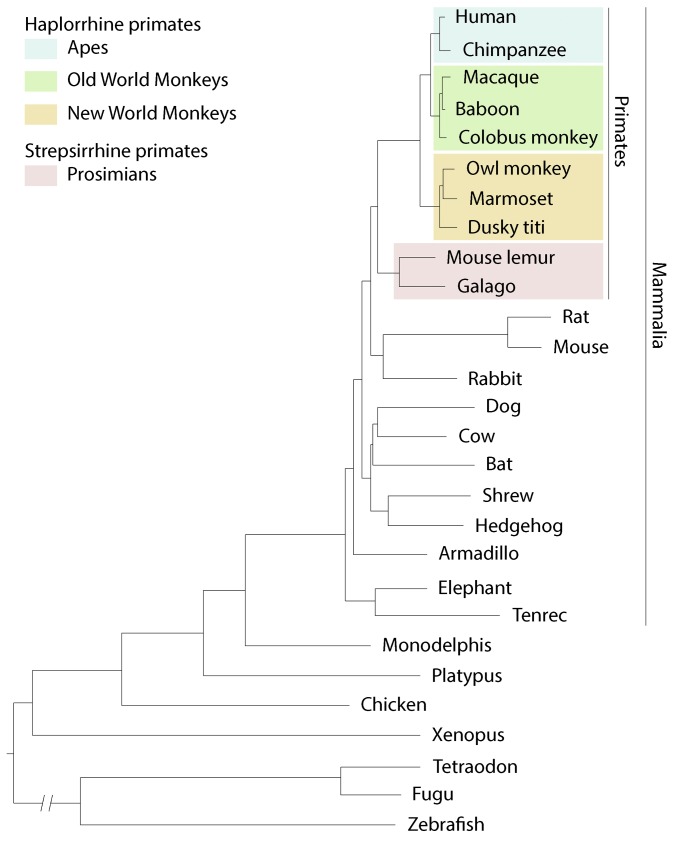Figure 1.
Phylogenetic tree showing evolutionary relationship of primates and other vertebrates. Branch length (horizontal distance) reflects the mutational load in coding and noncoding sequences for a species. Note that rodents (rat, mouse) diverged from the primate lineage more recently than all other animals shown, but their rate of mutation accumulation (mutational clock) is several times greater than that of other vertebrates, as indicated by the long cumulative branch length since separation of mouse and rat from the primate lineage. Genetic distance between species can be estimated from the sum of the branch lengths connecting them, which is about two times greater from mouse to human than from mouse lemur to human. Phylogenetic tree adapted from Margulies et al. (2007).

